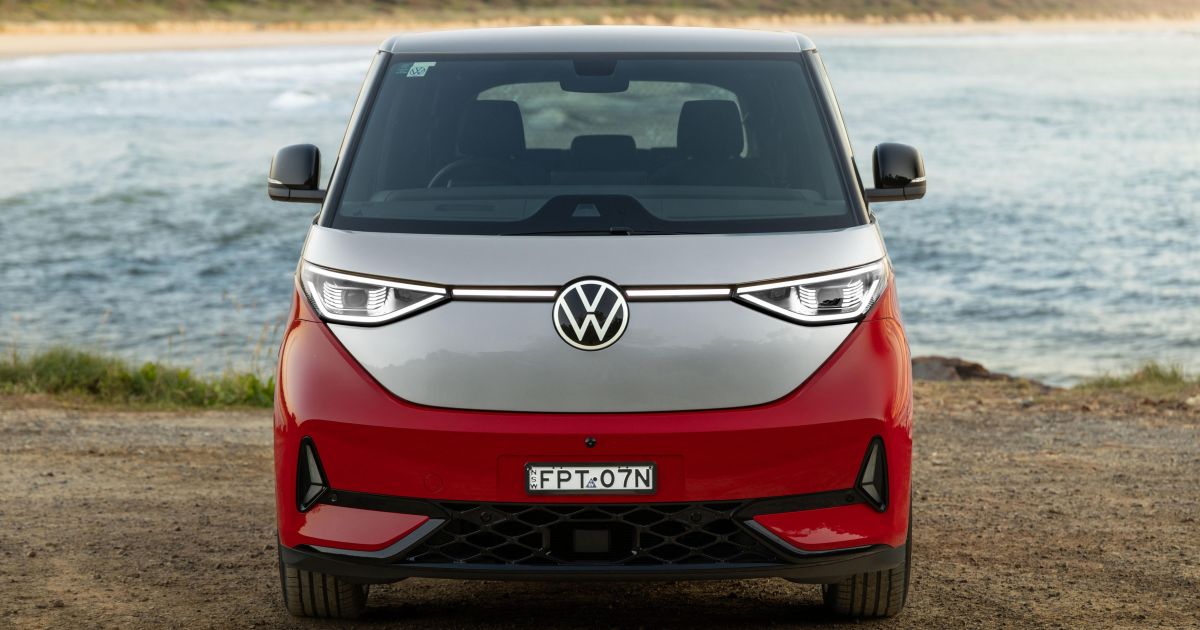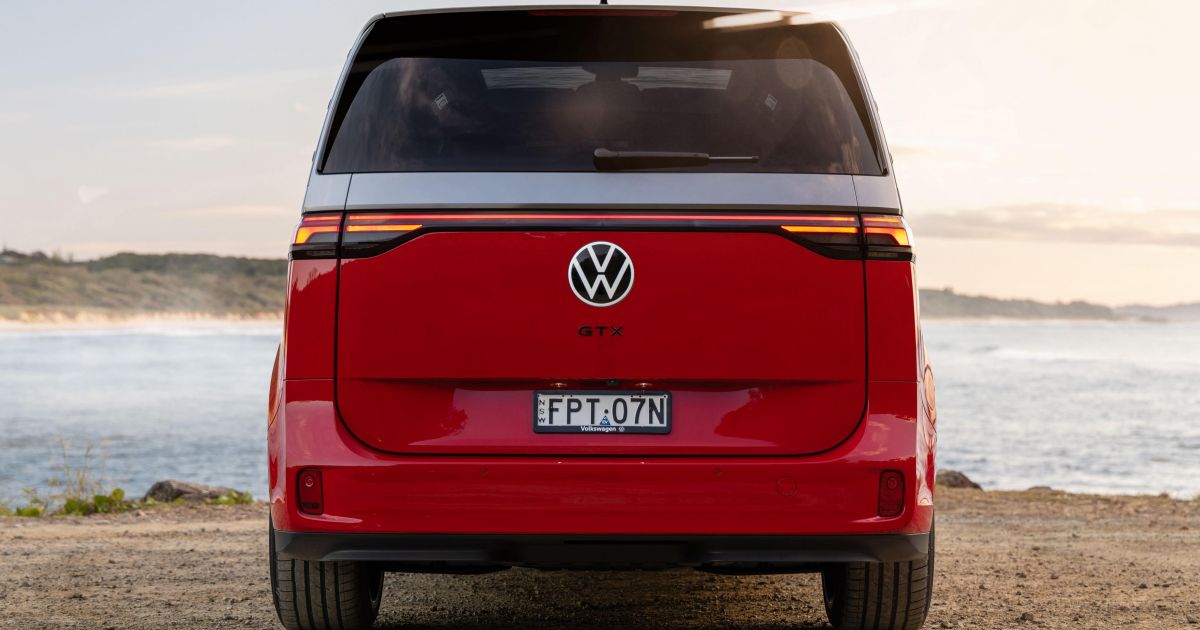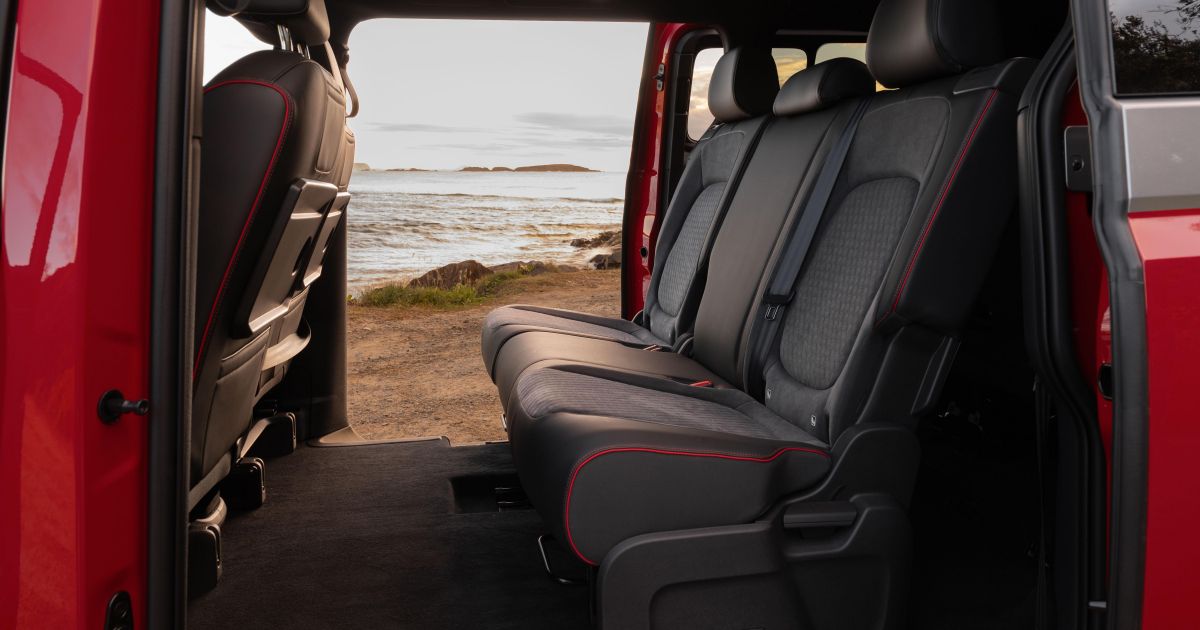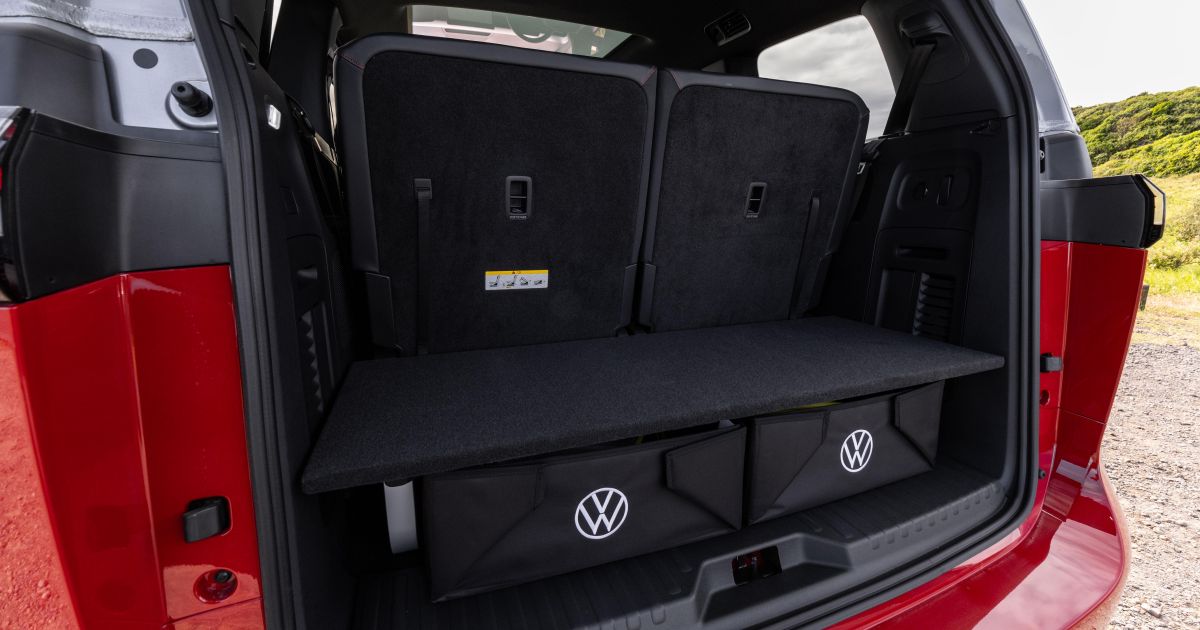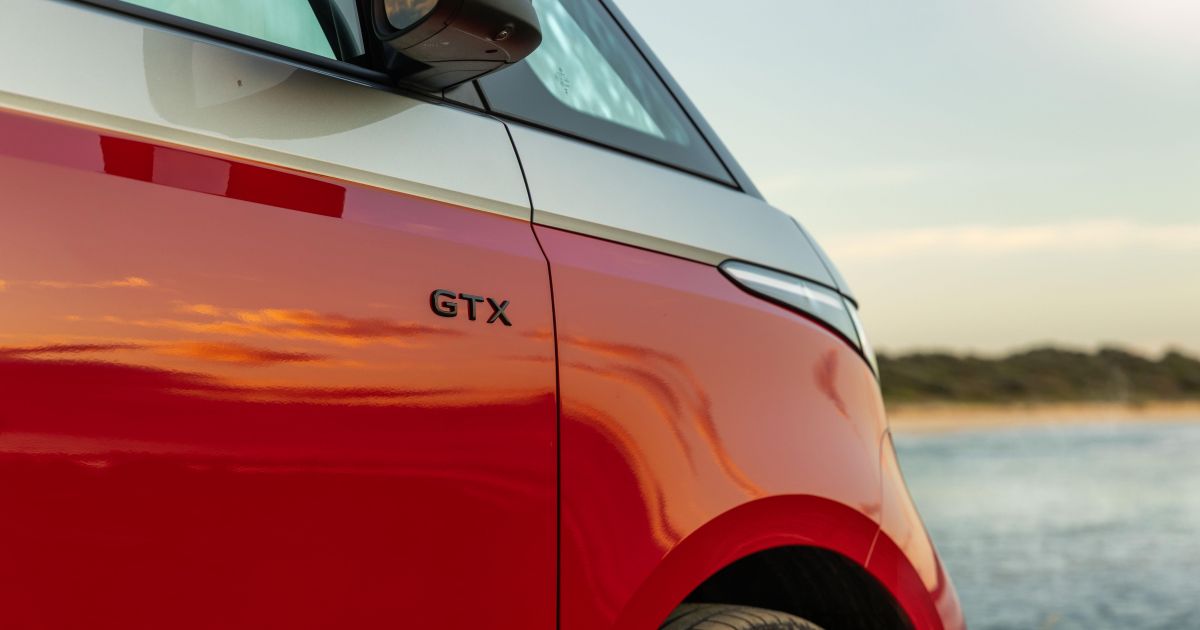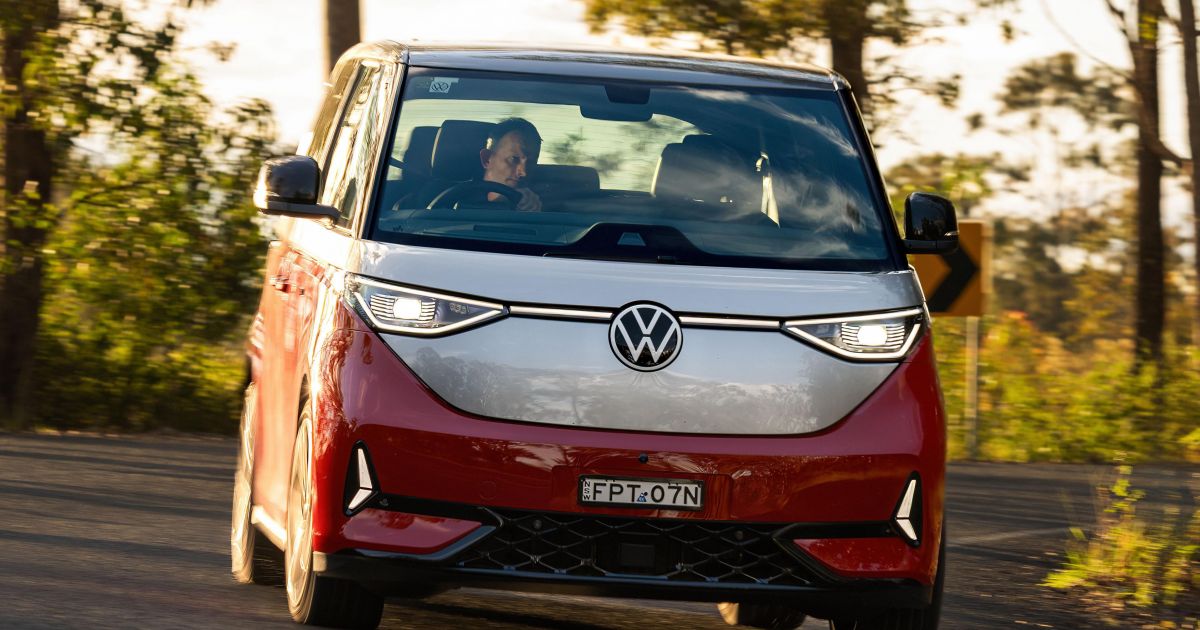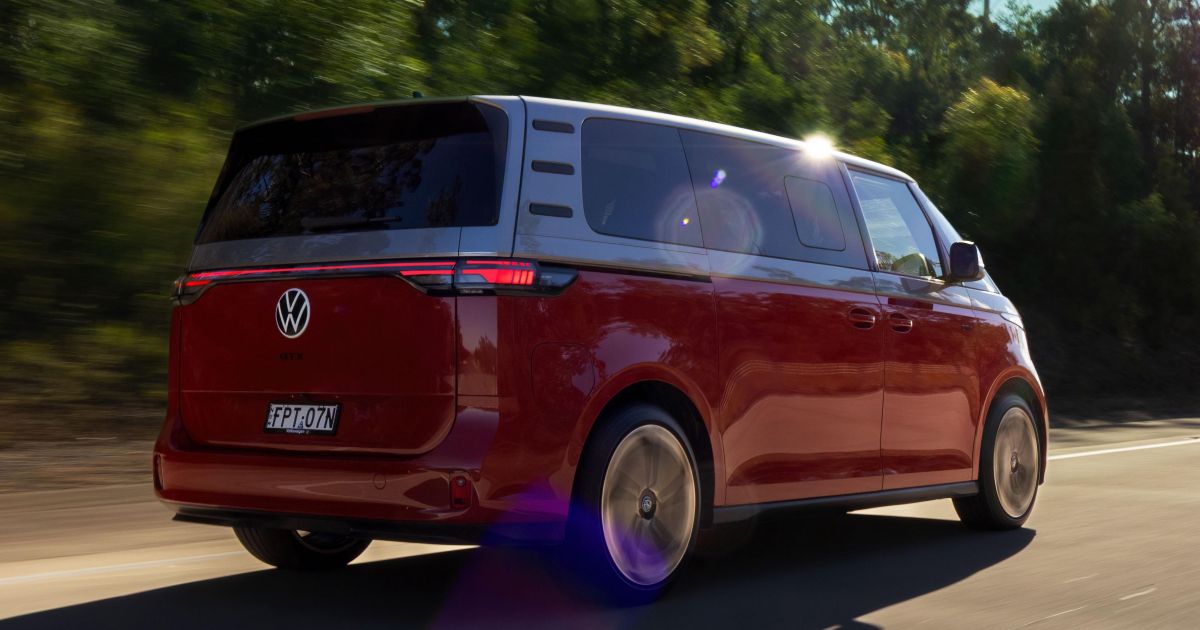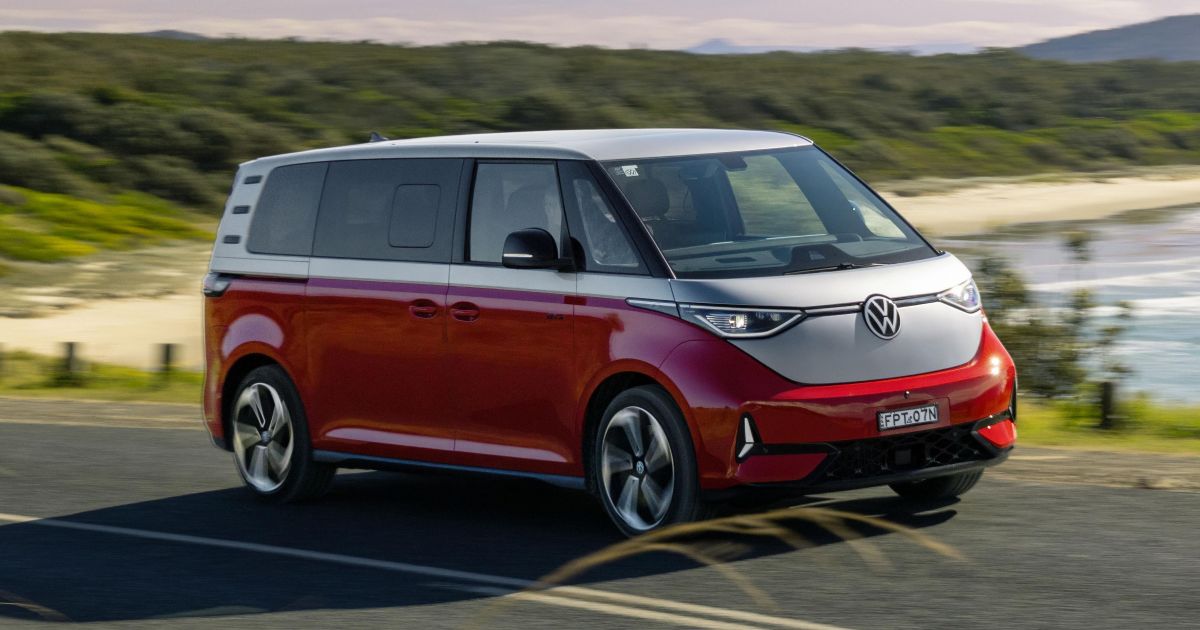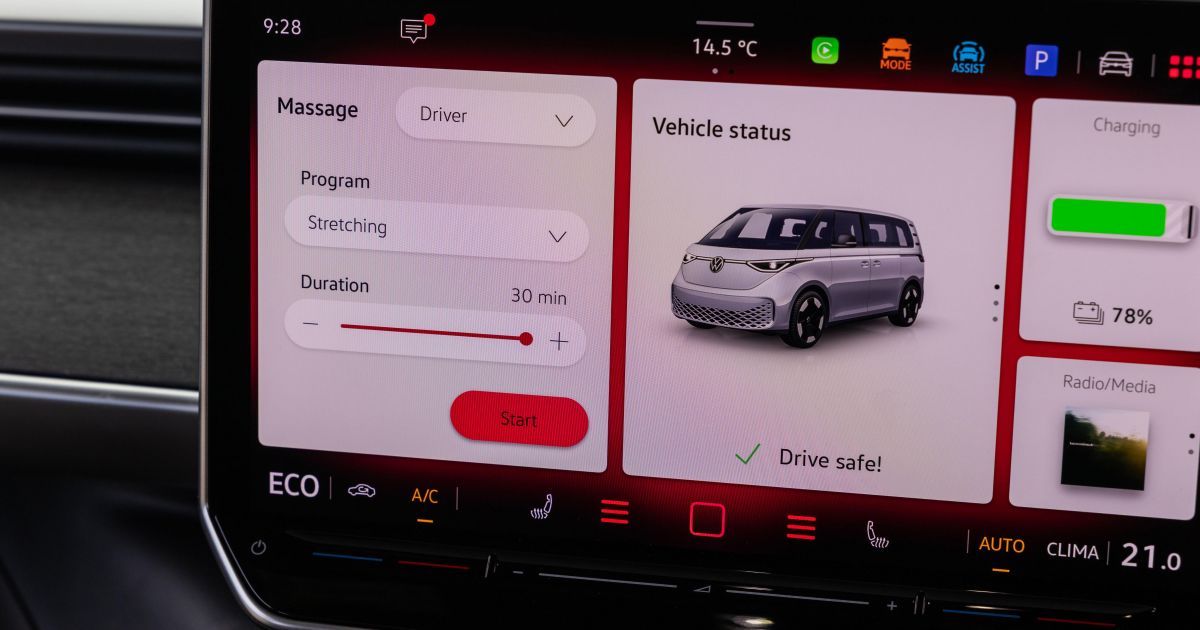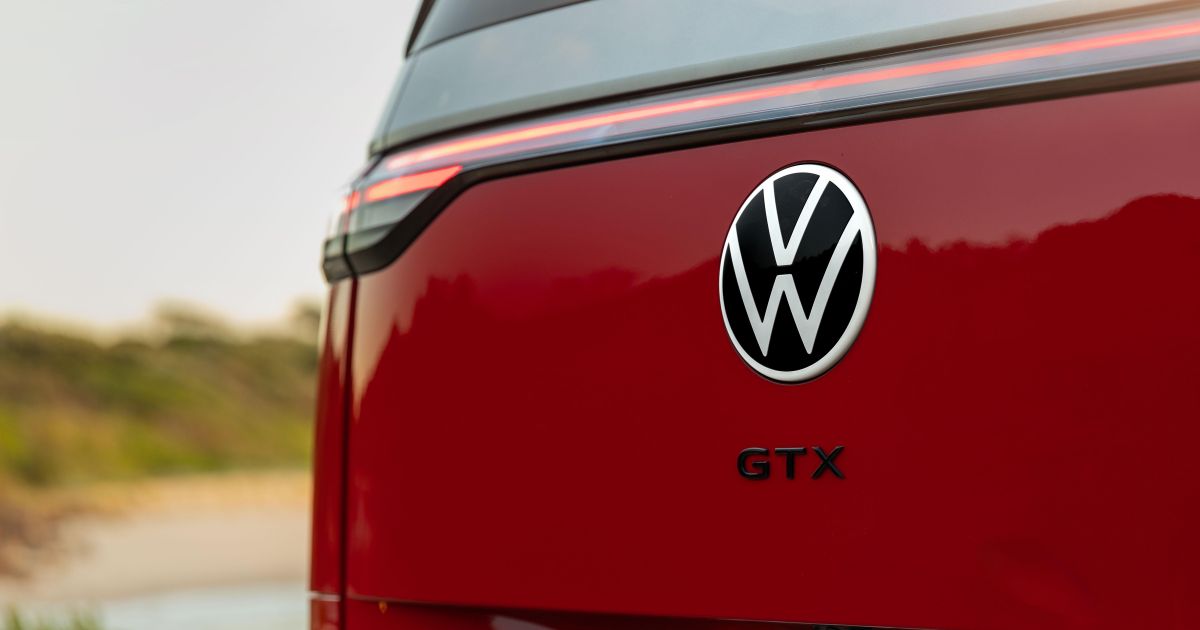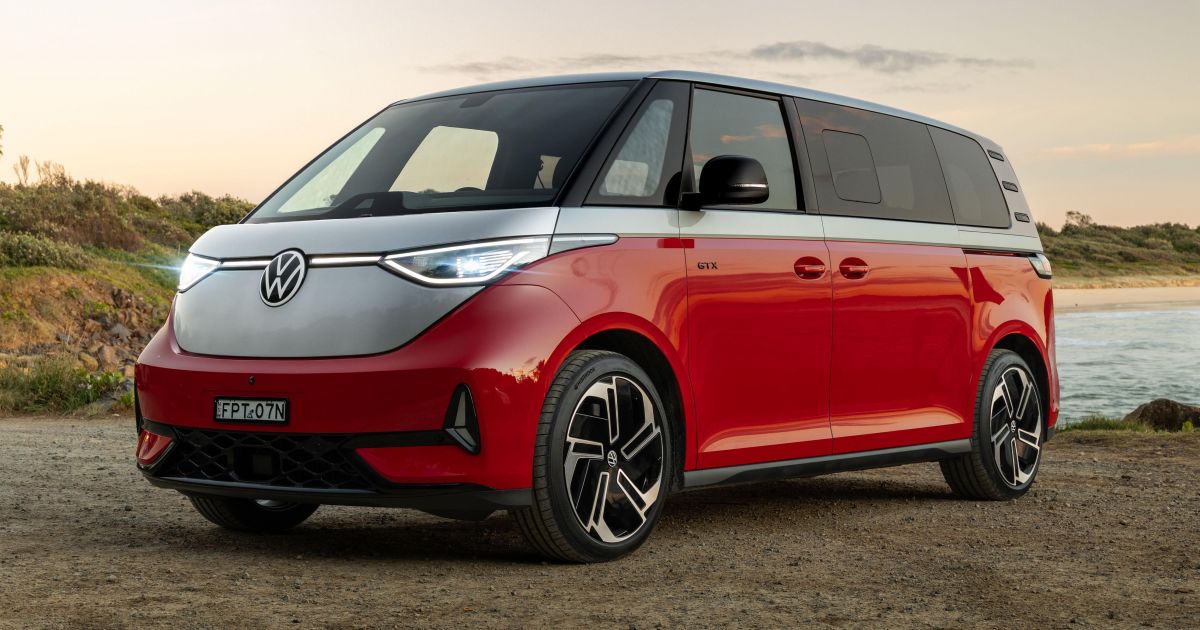Here it is folks: the born-again VW Kombi folks’ wagon in its finest form.
By now everyone knows Volkswagen’s iconic Type 2 ‘Kombi’, which became a symbol of the flower-power 1960s after its release in 1950, has been reinvented as an all-electric van and people mover called the ID. Buzz.
First released in Europe in June 2022 and previously due on sale in Australia in 2024, the ID. Buzz was finally launched here in December, initially in short-wheelbase rear-wheel drive Cargo commercial van and both SWB five-seat and LWB seven-seat Pro people mover guises.
First customer deliveries were held back until April to ensure all vehicles received a software update bringing Wireless App Connect tech allowing cordless Apple CarPlay and Android Auto smartphone mirroring, so to May this year less than 100 have now been registered.
Now comes the range-topping, LWB seven-seat ID. Buzz GTX flagship, which we first drove in October 2024 and which Volkswagen Australia expects will account for 20 per cent of all ID. Buzz sales locally – more than in another market – reflecting the popularity of GTI versions of the VW Golf here.
Volkswagen projects 55-60 per cent of buyers will opt for the Pro people movers, with the remaining 40-45 per cent going for the Cargo van. And of the almost 8000 expressions of interest it has received, most are keen on SWB and 70 per cent of orders are for vehicles with a trademark two-tone paint scheme.
It also says about 20 per cent of its initial annual allocation is already spoken for, but its sales ambitions are relatively low for what is a relatively niche model, at a minimum of 100 per month – much less than the traditional volume of Volkswagen Commercial Vehicles’ other models including the small Caddy, mid-size Transporter and large Crafter.
The top-shelf GTX is not only quicker and more powerful than all other ID. Buzz variants, thanks to its dual-motor powertrain that makes it the only all-wheel drive version, but offers a higher 1600kg braked towing capacity and scores almost every option as standard in a 300mm-longer body with the practicality of seven seats.
Does that make it worth almost $20,000 more than the LWB RWD Pro? Let’s find out.
How much does the Volkswagen ID. Buzz cost?
This really is the elephant in the room, because although all versions of the ID. Buzz including the sub-$80k Cargo commercial are priced under the luxury car tax (LCT) threshold, making novated lessees exempt from fringe benefits tax (FBT), the GTX is a lot pricier.
| Model | Price before on-road costs |
|---|---|
| 2025 Volkswagen ID. Buzz Pro SWB RWD | $87,990 |
| 2025 Volkswagen ID. Buzz Pro LWB RWD | $91,290 |
| 2025 Volkswagen ID. Buzz GTX LWB AWD | $109,990 |
But the GTX does offer more performance, more traction and more standard equipment (see below) than any other ID. Buzz, and there’s no doubt this is a lot of electric vehicle – even for $110k and especially compared to its few rivals.
Of course, direct competitors are rare, but they include electric people movers like the LDV Mifa 9 (from $104,000), Mercedes-Benz EQV ($161,723 before on-road costs) and Zeekr 009 (from $135,900), and seven-seat electric SUVs led by the Kia EV9 (from $97,000).
To see how the Volkswagen ID. Buzz stacks up against its rivals, use our comparison tool
What is the Volkswagen ID. Buzz like on the inside?
It’s a decent step up into the GTX, which isn’t helped by the lack of an A-pillar grab handle, but once inside you’re greeted with a cavernous space with a typically clean VW design that shouts quality and practicality, but doesn’t necessarily scream $110,000.
In the transition from delivery van to people mover and then performance flagship, the GTX hasn’t quite shaken off all of its commercial vehicle roots. There are still several hard plastic surfaces around the cabin, on the dashboard and door cards, which you don’t expect to see in a $100k car.
But the top ID. Buzz does offer a commanding view of the road through a massive windscreen and large front quarter windows (which are much larger but don’t open like the original Kombi’s), and good vision in all directions – including the rear, despite head restraints for all five rear seats.
And there are plenty of upmarket elements throughout the enormous cabin, including seven seats finished in ArtVelours Eco microfleece trim with a cool triangulated pattern, and GTX logos embroidered into the backrests. The two captain’s chairs up front are especially comfortable, with plenty of adjustability and fold-down inboard armrests.
There’s also red interior trims and stitching on the seats and steering wheel, which also features a GTX logo, all over which helps elevate this top-spec variant from its garden-variety stablemates.
All of the standard ID. Buzz storage solutions are also here, including multi-level storage bins in the doors, a removeable centre console box between the front seats, a shelf in front of the passenger and a set of flip-down cupholders on the centre stack below the tablet-style central infotainment touchscreen.
There’s also a convenient wireless phone charging slot, and USB-C charging ports everywhere from in the doors (including both electric rear sliding doors), in all three rows and on the dash.
And all seven passengers get to bask underneath a massive glass roof, which can be made transparent or opaque at the touch of a slider, negating the need for a sun shade.
Just as cool is the 12.9-inch multimedia screen, which has wireless Apple CarPlay and Android Auto connectivity, satellite navigation and a bunch of part tricks including a ChatGPT-based voice-control system.
There’s a favourites bar at the top that allows you to jump straight into submenus like the autonomous parking system, driving assistance settings, drive mode and a number of other controls, and the screen itself is high-resolution and very quick to load fresh info.
Sadly though, the GTX still has VW’s frustrating haptic controls on the steering wheel, which can be easy to bump by mistake in tight turning situations accident. Thankfully, there’s an ‘always on’ temperature menu at the bottom of the display, besides the touch-sensitive sliders for the climate control and volume.
There are buttons to electronically open or close the side sliding doors, both up front below the screen) and on the B-pillars, plus slide-opening rear windows.
But there’s an abundance of storage for rear occupants, including door pockets and seatback pockets, plus handy amenities like ceiling-mounted air vents and a climate control system for the back seats.
The second-row seats slide and recline forward to allow easy access via the huge side openings to a proper pair of third-row seats, which can also be folded down from the rear.
Rearmost occupants are afforded their own lights, vents, grab handles, cupholders, storage, charging outlets, padded armrests, and a good view out thanks to the large vertical glass, although the third-row windows are fixed and pretty small.
The six-seat layout offered overseas won’t be available in Australia, but there are ISOFIX and top-tether anchors for child seats in both the second and third rows of our seven-seat GTX.
All three rows offer acres of elbow, shoulder, head and leg room, even with seven big and burly occupants in all seats.
Cargo capacity is equally big, stretching from 306 litres behind the third row (plus a couple of soft sliding drawers under the rear seats, which is ideal for stowing charging cables of wet towels, etc), 1340L behind the middle row and a mega 2469L behind the front seats – enough to stow a big fridge.
Compared to the Pro LWB, unladen mass rises by 154kg to a hefty 2846kg, and gross vehicle mass (GVM) increases by 60kg to 3400kg. On the upside, towing capacity increases from 1000 to 1600kg, but payload falls from 648 to 554L, which is nevertheless more than the Pro SWB (516kg).
There’s a 100kg roof load limit via two optional roof bars, but no ID. Buzz comes with an actual spare wheel. Instead, you only get a tyre repair kit.
To see how the Volkswagen ID. Buzz stacks up against its rivals, use our comparison tool
What’s under the bonnet?
Befitting its station as the most powerful member of the ID. Buzz family, the GTX punches out 40kW more power than single-motor rear-drive Cargo and Pro variants (but only 30Nm more torque), and also more than the Golf R hot hatch, making it 1.5 seconds quicker to 100km/h than the LWB Pro.
| Specifications | Volkswagen ID. Buzz GTX |
|---|---|
| Drivetrain | Dual-motor electric |
| Battery | 86kWh (usable) lithium-ion |
| Power | 250kW |
| Torque | 590Nm |
| Driven wheels | All-wheel drive |
| 0-100km/h (claimed) | 6.4 seconds |
| Power consumption (WLTP claimed) | 21.2kWh/100km |
| Power consumption (as tested) | 22.7kWh/100km |
| Claimed range (WLTP) | 450km |
| Max AC charge rate | 11kW |
| Max DC charge rate | 200kW |
Volkswagen says the the GTX’s carryover 86kWh Li-Ion battery can be DC fast-charged from 10-80 per cent in 26 minutes at its 200kW maximum, or from 0-100 per cent in nine hours via a three-phase 11kW AC outlet.
To see how the Volkswagen ID. Buzz stacks up against its rivals, use our comparison tool
How does the Volkswagen ID. Buzz drive?
For its local launch, we drove the GTX over some pretty punishing and recently flood-damaged rural roads on the New South Wales mid-north coast, including a series of demanding twisties and some freeway stints, and we came away pleasantly surprised.
The first thing we noticed was just how quiet the cabin is, with only background motor whir and a faint rattle from the dash and rear cabin disturbing the serenity of this very large people mover, which is quite a feat given the drummy nature of a large box on wheels like the ID. Buzz is.
The next surprise came with handling performance. No, this is no sports car and there’s no escaping the size and near-3.0-tonne mass of this big EV. But the GTX sits much flatter in corners than lesser Cargo and Pro variants, turns into tight bends with relative alacrity, and compensates for its huge footprint with confidence inspiring traction and road holding.
Yet ride quality at no times feels harsh or even firm, preventing this big bus from crashing over nasty water-damaged road surfaces and ironing our even the roughest of coarse-chip pavement. And that’s despite its big 21-inch wheels and lack of adaptive damping.
In typical VW fashion, the flagship ID. Buzz strikes a great balance between comfort and sportiness, offering a significant step up from non-GTX variants without ruining its key function of pampering seven occupants, whether that’s to school or interstate.
There is some tyre road on concrete roads, and some noise over expansion joints, but in general the GTX is a great place to spend long amounts of time in.
Perhaps the biggest surprise is just how much performance is on offer here. No, this is no Tesla Model Y Performance, but the GTX feels a lot quicker than its on-paper credentials look, zipping out of corners with satisfying enthusiasm, and launching from either a standing start or highway speeds with impressive urge.
Sure, like all mainstream EVs, it runs out of puff at high speeds, as evidenced by its 160km/h top speed, but who cares?
There’s also just the right amount of ‘engine braking’ via its regenerative braking system, which works well in stop-start situations, and there’s also a ‘B’ transmission mode that doesn’t offer full one-pedal driving functionality, but brings the car to an almost complete stop.
In fact, with a little anticipation, you can drive almost everywhere in B mode without touching the brakes, although emergency stops do require a decent shove of the left pedal and a decent stopping distance.
All that extra urge going through the front wheels doesn’t come at significant expense in terms of understeer, but the addition of all-wheel drive does bring plenty of benefits in the wet and on loose surfaces such as gravel roads, even if it does command a big price premium.
In true VW fashion, all of the GTX’s driver assist functions work seamlessly and intuitively, too. The lane keeping and adaptive cruise control systems work just as they should in the background, without ever being overbearing. Indeed, you’re unlikely to notice they’re there until you need them.
To see how the Volkswagen ID. Buzz stacks up against its rivals, use our comparison tool
What do you get?
The GTX comes fully loaded with almost every ID. Buzz option, including the smart panoramic glass roof and the Premium Interior Style Package, which brings extras like 30-colour ambient lighting, massaging front seats and heated outboard rear seats.
2025 Volkswagen ID. Buzz GTX equipment highlights:
- Seven seats
- IQ. Light matrix LED headlights
- Tyre pressure monitoring
- Power tailgate
- Rain-sensing wipers
- Heated washer nozzles
- Rear wiper
- Power sliding doors
- Power-folding, heated exterior mirrors
- Distinct front bumper design with honeycomb finish
- Distinct daytime running lights
- Black exterior trim highlights
- 20- or 21-inch wheels
- GTX badging
- Panoramic glass roof with one-touch opaque adjustment
- Dark interior trim
- Black headliner
- Red contrast piping and stitching
- Heated steering wheel
- Leather-wrapped steering wheel
- ArtVelours Eco microfleece trim with diamond pattern
- Electric front seat adjustment with memory settings
- Manual front seat height adjustment
- Heated front seats
- Removable centre console with multiple storage compartments
- Stainless steel pedals
- Nine-speaker sound system
- 12.9-inch touchscreen infotainment system
- Wireless Apple CarPlay and Android Auto
- IDA voice assistant
- DAB+ digital radio
- Wireless phone charger
To see how the Volkswagen ID. Buzz stacks up against its rivals, use our comparison tool
Is the Volkswagen ID. Buzz safe?
The standard ID. Buzz grades have been awarded a five-star safety rating from Euro NCAP based on testing conducted in 2022, but Australian sister authority ANCAP is yet to apply a rating locally.
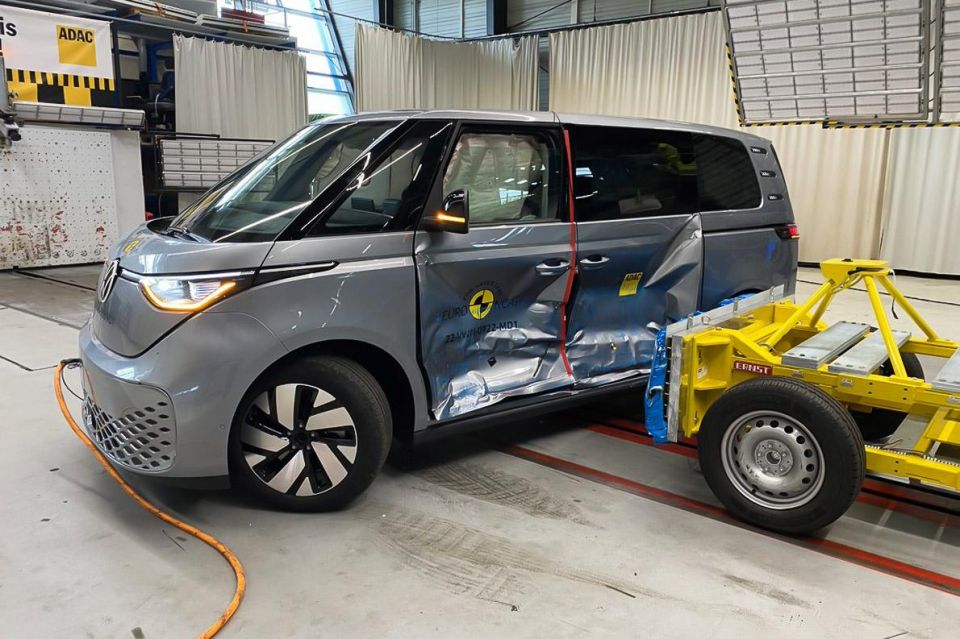
| Category | Volkswagen ID. Buzz |
|---|---|
| Adult occupant protection | 92 per cent |
| Child occupant protection | 87 per cent |
| Vulnerable road user protection | 60 per cent |
| Safety assist | 90 per cent |
Standard safety equipment includes:
- Autonomous emergency braking
- Pedestrian detection
- Cyclist detection
- Swerve support
- Oncoming vehicle braking when turning
- Blind-spot monitoring
- Driver attention monitoring
- Lane-keep assist
- Rear cross-traffic alert
- Safe exit warning
- Surround-view camera
- Travel Assist
- Lane centring
- Adaptive cruise control with stop/go
- Front and rear parking sensors
- Front, front-side, front-centre and curtain airbags
There are top-tether anchor points for child seats in all three positions in the second row, plus ISOFIX points for the two outboard seats. In LWB models, the third row also features ISOFIX points and top-tethers, making it possible to fit five child seats.
To see how the Volkswagen ID. Buzz stacks up against its rivals, use our comparison tool
How much does the Volkswagen ID. Buzz cost to run?
Volkswagen Australia offers a five-year, unlimited-kilometre warranty for its entire lineup.
For the ID. Buzz, there’s also an eight-year, 160,000km warranty for its high-voltage battery pack, which guarantees a 70 per cent charge capacity, and two years of roadside assist.
Service intervals are long at 30,000km or 24 months and there are several capped price service programs, including a six-year Care Plan covering the first three scheduled services, an eight-year Care Plan covering the first four scheduled services, and a 10-year Care Plan for the first five scheduled services.
To see how the Volkswagen ID. Buzz stacks up against its rivals, use our comparison tool
CarExpert’s Take on the Volkswagen ID. Buzz
There really is nothing else on the market quite like the ID. Buzz GTX. Electric people movers are rare in themselves, and high-performance seven-seat EVs are rarer still. And none offer the nostalgia of this large battery-powered bus in trademark two-tone livery.
If you’re a Kombi tragic, or need to move a large family or several executives around on a regular basis, the GTX makes a lot of sense – if you can afford it.
Yes, it’s far from cheap, but the GTX version of the reincarnated electric Kombi brings enough extra powertrain and chassis performance, plus all of the ID. Buzz’s party tricks including the security of AWD, to justify its price premium.
Interested in buying a Volkswagen ID. Buzz? Get in touch with one of CarExpert’s trusted dealers here
Click the images for the full gallery


